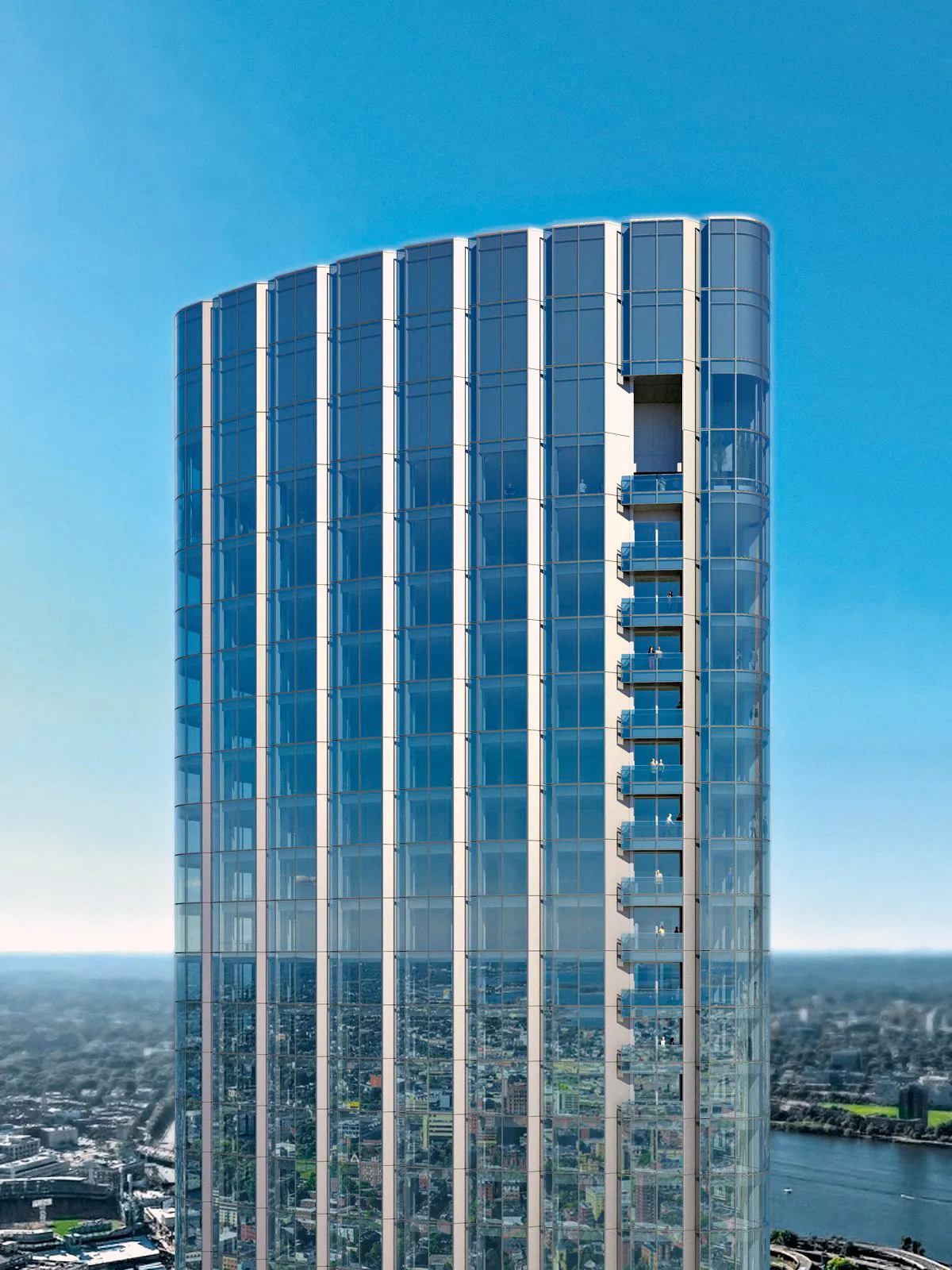Designing for Performance: The Art and Science of Self-Consolidating Concrete
Recent advances in materials and techniques have opened up an almost limitless horizon of new architectural and structural possibilities. This is even more the case if the building material offers incredible versatility to create geometric shapes and sculpturesque forms that are structurally efficient, while also bringing aesthetic visions to life with a broad range of colors, textures and flawless finishes.
Due to the development of self-consolidating concrete (SCC), design and construction of complex structural sections is almost unlimited, and high-quality surface finishes can be achieved even in the most difficult areas. The key to successful performance requires special care in the selection of materials in developing a high-quality concrete with the optimal flowability and non-segregating properties.
Below are some guidelines for achieving the desired structural performance and aesthetic appearance with your next project based on the disciplined approach that Holcim takes with its value-added AgileflowTM SCC technology.
Materials do matter—local material characterization
Development of a high-performance SCC mixture is as much about following a rigorously defined process as is it about applying the scientific concepts of granular packing, chemistry and fluid mechanics. While fluidity provides easy concrete placement and a high-quality finish, it also increases segregation— resulting in uneven hardened material, cracks, and blemishes. Stability, on the other hand, prevents segregation, but also leads to high viscosity and poor placement. Reconciling these two opposite requirements is a further challenge since fresh concrete is subject to a variety of mechanical stresses.
Agileflow SCC products are designed to provide tight control of fluidity and stability physical properties. Following a common defined procedure, mixes are customized in the right proportions based on targeted performance properties and local raw materials characterization. Quality of the SCC is just not related to how many chemicals and water are in the mix but to how proportions are determined to obtain a more fluid mix and an ideal solution for a site-specific horizontal or vertical application.
Optimizing viscosity
The viscosity of the SCC plays a very important role in optimizing flow characteristics and workability, controlling surface defects and verifying desired performance properties. Every application has different requirements, and there is a window in viscosity that needs to be targeted to ensure optimal results. To achieve a very high-end surface finish, viscosity needs to be low enough to ensure entrapped air goes out of the concrete and not leave bubble defects at the surface. However, the viscosity should not be too low, or large particles can drift down over time into the formwork and create other defects.
For structural beams containing congested reinforcement, concrete will take a lot of time to fill the form and will struggle to properly embed the rebar if the viscosity is too high. Therefore, the viscosity needs to be low enough so that the concrete flows around the reinforcement very easily and makes it easy to cast reinforced structures without having to move the pouring point and put good vibration in it.
Maintaining the spread
Retention of SCC flowability at the jobsite is extremely important. Hot weather, long-haul distances, and construction delays will adversely affect flow characteristics, and the addition of water may not achieve the same flowability and could cause stability problems. The spread of the concrete after being released from a slump cone is commonly used measure of the flowability of SCC. With most standard SCC mixes, the spread starts to decline tremendously at 1 hour. Strict control of the mix design enables optimal application of cement properties. With Agileflow SCC technology, spread and workability of the mix are maintained for up to two hours due to the selection process in place for the chemicals used in the mix to optimize flowability.
Ensuring structural integrity
A successful SCC mixture must not undergo any form of segregation or it will not perform as expected. Poor segregation resistance can cause uneven distribution of course aggregate, blocking of flow around reinforcement, high drying shrinkage, and nonuniform compressive strength.
Holcim has spent many years in working on the key parameters that must be measured to ensure the proper proportions are selected to avoid segregation while giving the appropriate flow and viscosity. Unlike standard SCC mixes, Agileflow SCC products do not rely on VMA admixtures to increase robustness but rather controls segregation through proper mix design.
Focusing on strict quality control
Upon successful completion of local material assessments, QC professionals need to extensively test the SCC mix—in both the laboratory and the field— for flowability, viscosity, strength, set time, durability, and other targeted performance properties. The correct use of high-quality formwork is critical to achieving the desired finish and performance. Forms need to be defect-free, cleaned thoroughly between uses, and treated with a suitable release agent. Any leakage or movement of the liner can lead to finish quality issues. The path to a perfectly finished, aesthetic, and high-quality surface appearance requires the creation of samples to ensure your expectations are met with colors, textures, or complex patterns. Pretesting in a smaller version of the formwork is also recommended when working with complex shapes and patterns.
Training on proper quality control measures at a local level is important. This should include all personnel on the project team to ensure a high degree of consistency and reliability. Following strict QC guidelines, every batch of concrete needs to be tested to ensure all performance requirements are met.
Achieving exceptional results through collaboration
Based on experience gathered from hundreds of SCC applications, Holcim understands that the structural performance and aesthetic requirements of each project are unique. From planning through completion, our architectural concrete experts can guide you through the rigorous quality-assurance process to ensure your vision becomes a reality.
The key to success is to engage these local professionals early in the planning process to discuss your project goals, coordinate local material assessments, and customize a value-driven SCC solution. This consultative collaboration includes a path to creating a one-of-a-kind surface appearance with an exciting array of color, textures, patterns, and customized finish options available with our Agileflow SCC.

Case Study: One Dalton Tower
The 61-story One Dalton tower—New England’s tallest residential building — represents a significant addition to the Boston skyline. An innovative collaboration of architecture and craftsmanship, the 742-foot landmark required 70,000 cubic yards of concrete to build.

Have a question?
Our sales reps are ready to assist you with your project.






